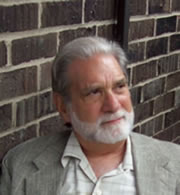This is a summary report on a sting operation case I worked on as an applied linguist. In it the target was a non-native English speaker with a beginner level of English proficiency. The sting setting was a discount store. The undercover officer attempted to persuade a store employee to buy jugs of alleged stolen liquid detergent for sale in the store.
In law enforcement this type of operation is known as a “Suds for Drugs” operation. The goal of the police sting is to crack a criminal network running a “suds for drugs operation”. The money paid would then be taken to a drug dealer to buy drugs. A person desperate for drugs might simply steal liquid detergent and take it directly to a drug dealer for drugs. (Other commonly used products have also been used in this way.)
In this case the detergent involved was Tide, known in the criminal community as “liquid gold” as it is known to be very popular and one of the more expensive of such detergents.
This case illustrates the all too often lack of awareness by law enforcement officers (LEOs) of what it means to be a non-native speaker. In sting cases in which an LEO has targeted a non-native speaker, the LEO might not realize his sting communication strategies might be too subtle for the target to pick up on.
For example, in one instance in this case the LEO told the target, “When I take the jugs off the truck, you know what I mean [wink-wink, implied ”I’ve stolen the jugs”]. When the target didn’t respond, the LEO might have assumed the target has understood the illegal aspect of the deal to buy ‘stolen’ liquid detergent. The target hadn’t rejected the arrangement. The LEO made several visits to the store before finally closing the sting. The interactions were recorded on the LEO’s mobile phone video.
As a reminder, in a sting operation the (LEO) should make it clear to the target that she/he is being asked to participate in an illegal activity. However, what happens if the target does not understand enough English to recognize that the proposed activity is illegal?
What kind of analyses are needed to determine how likely it is that the target might or might not have understood? Also, FBI regulations about undercover operations are to protect the innocent against entrapment.
Entrapment occurs when the Government implants in the mind of a person who is not otherwise disposed to commit the offense the disposition to commit the offense and then induces the commission of that offense in order to prosecute. (FBI Undercover Operations, V. A.2)
An expert witness in linguistics is not allowed to argue the law as it is the role of the attorney. However, the linguist may address the likely comprehension by the target of the LEO’s communications. The linguist can conduct appropriate language assessments and link the assessment criteria to the language evidence, e.g., recorded interactions. Subsequent analyses might focus 1) on the effectiveness of the LEO’s communications in making clear the proposed illegal activity; 2) on the target’s responses; and finally, 3) on the LEO’s attempt to close the sting.
The language evidence in this case consisted of a) the findings of two face-to-face, oral proficiency interview protocols; and b) the relevant language evidence in the undercover sting operation, i.e., cell phone video recordings of three visits over 1 ½ week period.
The defendant’s English communication skills were assessed as “Beginner” for both speaking and listening.3 This is the legal question: Was Mr. X's utterance of "yeah" sufficient linguistic evidence that he probably understood that LEO had planned to sell him "stolen property"?
Based on analyses of the video-recorded language evidence of in-store interactions, my expert opinion was that it was highly UNLIKELY that a person with Mr. X’s tested English language proficiency would have understood any of the LEO’s vaguely stated references to the source of the “stolen property.” This included use of the verb take instead of steal.
Also, it is highly UNLIKELY Mr. X would have specifically noticed and understood the LEO’s two references to steal. The first time was when the LEO was chatting with the target and mumbled steal once in a string of several sentences.
The critical reference to steal was the second one: “I only steal four of them, man! It’s been rough.” This was uttered immediately after Mr. X agreed to the transaction offer by the LEO, “You gimme 3 dollars for these”. Mr. X replied Yea, while he was reaching for money and checking a jug of detergent. Mr. X did not appear to react to the LEO’s next utterance. The sale had been completed.
One cannot get inside a person’s head, but as language is one window into the mind, a linguist can apply a range of tools. Second language acquisition and sociolinguistic factors were considered in addition to the assessment of Mr. X’s English proficiency.
One sociolinguistic linguistic analysis included Topic: Response, looking at who repeatedly raises a topic, (in this case the topic of the jugs of liquid Tide), and how the target responds.4 There was no visual or audio evidence indicating evidence of Mr. X’s understanding the LEO’s repeated attempts to hint at an illegal source of the detergent.
Still--native English speaker fact-finders might assume that steal is a common, everyday word. “Everybody knows what it means, so of course the target would have understood it!” So-- a final analysis was done, thanks to the skills of a linguistics colleague, Dr. Tammy Gale, with a specialization in computational linguistics. She used the Corpus Of Contemporary American English (COCA), a spoken database of over 95 million words, 95,385,672 words (2014)5.
We looked at the frequencies in American English of the various forms of the base forms (lemmas) steal and take. The closing question, then was:
Does the lemma steal have a high enough frequency--for it to be likely--for a person of Mr. E’s tested English proficiency--to have been exposed to and to have understood the LEO’s use of it?
The results are in the chart below.
|
Lemma |
Occurrences |
|
Size of database |
Frequency
|
Steal lemma occurred |
5,226 |
times in |
95,385,672 words |
0-0.55 times per 10,000 words |
Take lemma occurred |
192,005
(36.7x) |
times in |
95,385,672 words |
20.13 times per 10,000 words |
However, I was concerned about whether fact-finders would sense the significance of the statistics. It’s not my forte either! First, 0.55, a part of a time? was roughly doubled to 1.0,
also doubling the number of words from 10,000 to 20,000. Thus, the lemma for steal occurs roughly 1.0 times in 20,000 words.
However, something more concrete and manageable was needed. In my final report I needed to describe the above procedures and how the statistics would be demonstrated in court.
An initial number of grains of white rice were counted out, and weighed on a scale by a university chemistry professor. We then we added enough rice to reach the proportion needed. (I was not going to count out 20,000 grains of rice!)
For the proposed court demonstration, I followed my layperson’s understanding of Federal Rule 103 on the admissibility and exclusion of Demonstrative Exhibits. A linguistics expert should consult with the attorney in the case on the applicability of federal rules. However, in this case, the attorney hadn’t applied this rule before. It was my understanding that a demonstration might be used if shown to be relevant, will assist a witness in explaining his/her testimony, and if the probative value outweighs prejudicial effect. I understand that Rule 103 is used to exclude demonstration if it risks undue prejudice, confuses or misleads, causes undue delay, is a waste of time, or involves needless presentation. Again, a linguist should consult with the attorney on the application of federal rules.
The demonstration in court would involve pouring the measured-out rice noisily into a glass bowl. Then one grain of rice, colored red, would be dropped into the bowl, to represent the frequency of steal in spoken American English. The attorney then turned over my final report.
Several days later, as I prepared to drive to the court in a distant city, the attorney called to tell me not to come. “Your report brought the other side to their knees!” The case was settled: charges withdrawn. Of course, it was good news for the defendant, but secretly I would like to have done the demonstration in court!
----------------------------------------------------
Footnotes
1 This case has been anonymized, changing case names, location, language and ethnicity.
2 FBI Undercover Operations pdf, V. PROTECTING INNOCENT PARTIES AGAINST ENTRAPMENT, A. ENTRAPMENT
3On the BEST Plus test for Mr. X’s English Listening Comprehension (How well did the examinee understand the setup and question?), he scored 0.8 in a scoring range of 0-3. Mr. X was evaluated to be at Level 1--Student Performance Level (SPL). The descriptors for Listening for this level are Understands only a few isolated words, and extremely simple learned phrases. Center for Applied Linguistics (CAL). BEST Plus. http://www.cal.org/aea/.
4 Shuy, Roger. (2005). Creating Language Crimes: How Law Enforcement Uses (and Misuses) Language (pp. 13-29 ). Oxford, New York: Oxford University Press.
5 The COCA search was done in early 2/11/2014.
Margaret M. van Naerssen, PhD, (Applied Linguistics - language development and sociolinguistics) is an Expert in Second Language Development and Language Assessment, as well as Language in Social Contexts. Since 1997, she has done consultant work in forensic contexts, focusing primarily on cases involving non-native English speakers. Dr. van Naerssen has primarily consulted and testified in Forensic Linguistic cases involving non-native English speakers. She’s worked with both defense and prosecution primarily in criminal cases including murder, rape, drugs, money laundering, telecom fraud, robbery, illegal arrests, coercive interrogations, terrorist conspiracy, and violations of the Federal Individual Disabilities Act. Civil cases have included contract and plain language guidelines, slander, and medical malpractice. .
©Copyright - All Rights Reserved
DO NOT REPRODUCE WITHOUT WRITTEN PERMISSION BY AUTHOR.









